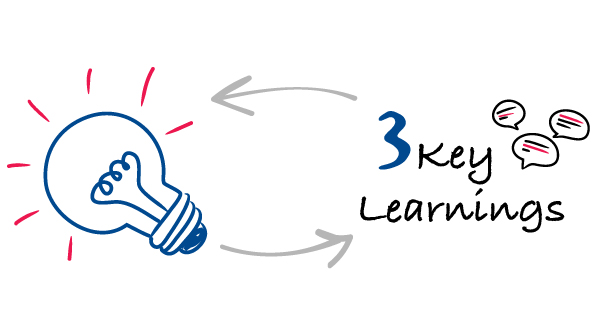By Thomas R. Werner, Business Angel and Business Development Advisor, Venture Partner at 3TS
 Being a serial entrepreneur myself, I’ve worked with a number of founders and managers supporting them in various areas including Sales and Business Development. For this blog post, I put together the key learnings about successful sales in B2B and complex markets relevant not only in the current difficult industries circumstances. Below, I focus on impactful pricing strategy, sales methodology and must haves for a high-performing sales organization.
Being a serial entrepreneur myself, I’ve worked with a number of founders and managers supporting them in various areas including Sales and Business Development. For this blog post, I put together the key learnings about successful sales in B2B and complex markets relevant not only in the current difficult industries circumstances. Below, I focus on impactful pricing strategy, sales methodology and must haves for a high-performing sales organization.
Have a tempting price list
Without a good price list, you don’t have anything to sell! Together with Product Management and the respective company strategy, you need to design the perfectly matching price-performance-offering for your target customers. It needs to suggest that what you have is the only and the best solution for the customers’ problems.
The (product-solution) offering and its price list should entail a clear growth path for additional and future sales. This means following the land & expand strategy by selling an initial ‘plug and play’ solution, you might open doors for further upselling opportunities. It also brings you into a better position to expand your customers’ stickiness to your own product portfolio.
Another important point in your (B2B) price list concerns the actual prices: The price tags should always allow a discount and price-negotiation bandwidth. It is not about lowering the intended price levels automatically, but there needs to be flexibility for customized ‘offer-packages’ with individual prices by e.g. adding specific value components (additional features or services for a limited period of time free of charge, granted discounts for the next product purchase, etc.) or getting in return extra commitments from the customer for yourself (opening an upselling path, brand referencing etc.). Price-negotiations should always be managed in a “give and take” manner.
Moreover, in B2B sales you should anticipate your price development in the next 2-3 years for either price increases or price erosion. Accordingly, it will be helpful to include automatic yearly price increases (in your terms & conditions) with a good rational for explanation behind it. In the contrary, if your worst competitor comes in with very aggressive pricing strategy, try to avoid mere price cuts by making your own offering smarter and not 1:1 comparable – by combining additional features, product groups or services.
Finally, be bold to say ‘No’ to a potential customer if you can’t agree on a fair or mid-term-oriented price construction that is tied to a clear ROI. Think about skipping the rest of the sales cycle, let the customer know that you can’t go under a certain price level and make sure you come back to them with a new offering next time. Loss making business is not a good business.
Build a clear sales methodology
You need to have a clear understanding of how to sell the product and to whom. If you don’t know who your exact buyer at which sales-stage is (the decision maker, the gate keeper, the door opener, the influencer etc.) and what their respective pain points are you won’t be able to pitch your offering in a successful way.
A fruitful sales methodology is based on a clear matrix of explicit quantitative and qualitative value propositions for the respective commercial and technical managers on the buyer’s side according to their buying-cycle. They themselves will need to argue their buying decisions in their own organization. Accordingly, you will need to present the relevant and appropriate sales arguments, information, references and potential joint ideas in a convincing and easy to digest way.
Sales is about right timing. It is advised to structure your sales cycle management in specific sales maturity phases in combination with the respective KPIs. For example, the informational phase should lead to a more specific pre-sales phase. That should trigger a customer RFP (request for proposal), which could be considered as an upcoming buying signal. The next stage will hopefully result in the offering phase, in which the price negotiations and critical details should be managed and agreed upon in a compact and stringent way. The intended target here is to get the “dry ink on the papers” in a short time frame. All important information and the outcome of each specific sales phase should be documented for ongoing assessment whether the “sweet spot” on the customer’s side has been met, in order to quickly move on to the next sales phase.
Sales is body building, marathon and sprint – all at once
Your sales organization will need versatile capabilities in order to meet the previously mentioned requirements in an efficient and profitable fashion. To be able to tackle the daily, mid- and long-term sales challenges, you should structure your tactical sales resources (people, teams, tools) in a clearly sales-target oriented organization and behavior.
To measure and continuously improve the sales progress you will need to have a thorough CRM approach. In todays’ sales environment it is imperative to have a powerful and smart CRM model (not just a software-tool) in place to leverage the sales outcome with qualitative and quantitative information. The sales manager needs to be able to rely on the CRM information not only to report the recent sales activities but also to analyze and forecast the sales potential, targeted customers and sales quota achievement.
Good sales management also entails stringent sales controlling – in the meaning of evaluating all sales activities and directing them into the right direction. Besides routine sales meetings and reporting, specific sales reviews as well as ‘win/loss analyses’ are important sales improvement methods.
Who is a good and successful seller? Thinking about the ‘right’ sales person characteristics for new business and customer acquisition, it can be useful to personalize the desired attitudes like ‘highly motivated, perseverance, hunter thinking’. On the other hand, existing customer management and upselling opportunities might flourish with ‘farmer approach’ sales people.
To attract the best sales team, an appealing sales incentive and compensation model needs to be in place. To name some of the best sales incentive practices, you will need to install an attractive base plus bonus model and also include, for example, additional sales accelerators for over-achievement or for specific territory, product or quarterly targets to boost sales.
Finally, I would like to remind of the old saying (not only in B2B): ‘It’s all about sales!’. Good products won’t sell on its own if sales is set-up in a poor way. On the other hand, average products and offerings might sell very well if the sales set-up is outstanding. Getting the above described three areas right increases your chances for successful sales, respective in B2B. Contact me at twerner@3tscapital.com if you want to talk further.

